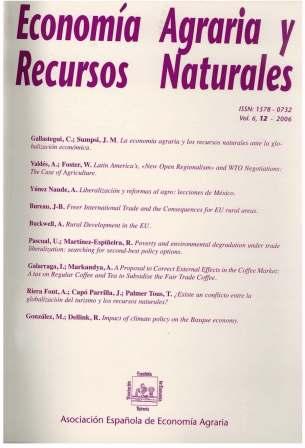Poverty and environmental degradation under trade liberalization: Searching for second-best policy options
Palabras clave:
Liberalization. Land-use model. Slash-and-burn. Soil degradation. Rural poverty. Mexico.Resumen
Forest based agricultural systems in the tropics are being opened up to international trade at an unprecedented rate.This is the case of tropical agriculture in Mexico under the North American Free Trade Agreement (NAFTA), which is also having significant impacts on the decentralized land use decisions of small-scale farmers and on the natural resource base on which they depend. This paper develops a bioeconomic model of a typical forest-land based farming system that is integrated with the non-farm labour sector, as typically found in tropical regions. The data used to generate the simulations were gathered in two communities of Yucatan (Mexico) in 1998-2000. Through a systemdynamics framework, the agro-ecological and farming economic subsystems are integrated and the current situation of price liberalization that is negatively affecting soil capital and income levels is compared to a scenario that precludes an «optimal path to extinction» through careful policy intervention. This second-best case is based on a targeted policy mix that seeks to maintain the system viable for as long as possible above an irreducible poverty level. The policy intervention involves, simultaneoulsy, subsidizing off-farm wage rates, intensification of land use, and the control of households’ rights to the forest commons. The model shows that such policy intervention can result in a large positive discounted net payoff basedon the increased incomes for the farming community after deducting the implementation costs of such intervention.Descargas
Publicado
2011-10-17
Número
Sección
Artículos

